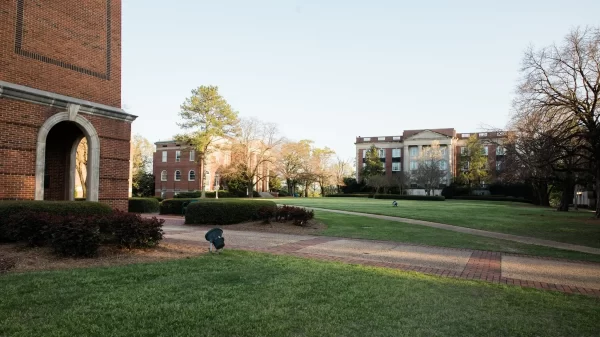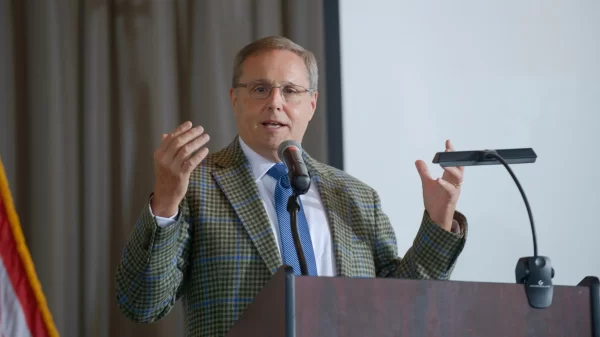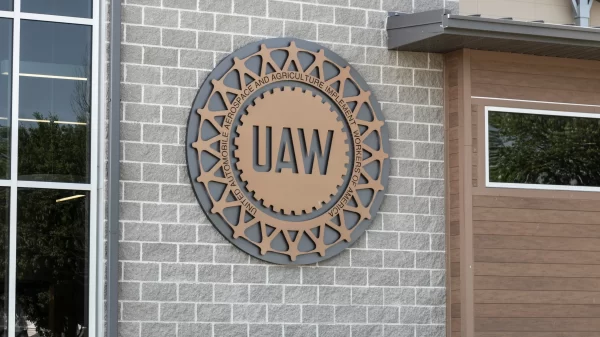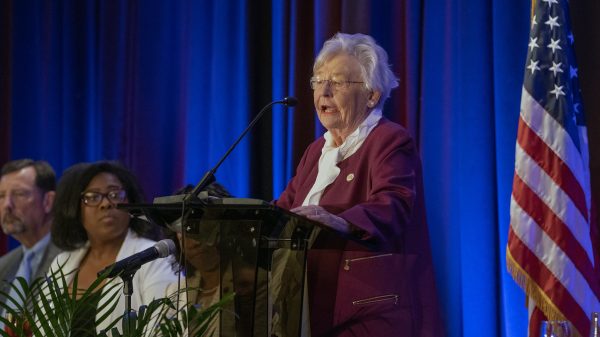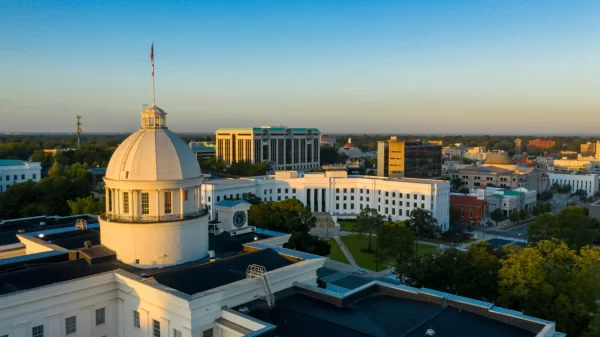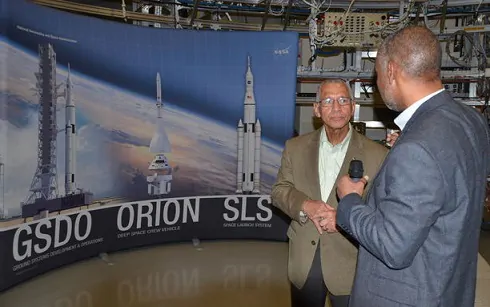By Brandon Moseley
Alabama Political Reporter
NASA announced that on Friday, March 14, Administrator Charles Bolden toured the agency’s Marshall Space Flight Center in Huntsville. Marshall is currently testing the avionics unit for the Space Launch System, the largest, most powerful rocket ever built.
Administrator Bolden said, “It’s great to be back at Marshall and see, firsthand, the impressive progress made by the SLS team. SLS will help take American astronauts an asteroid and Mars, and it all starts here in Huntsville. My hat’s off to the entire team for their hard work.”
Bolden joined staff from Alabama’s Congressional delegation and community leaders at Marshall’s System Integration Laboratory. The group had the opportunity there to view the Space Launch System (SLS) avionics unit arranged in flight configuration, along with booster hardware, which are being integrated and tested together to ultimately guide the entire vehicle. Bolden and the group also watched flight software simulations of how SLS will perform during launch.
Alabama Senator Richard Shelby (R) from Alabama said in January, “If we are to maintain our leadership role in human space flight, we must continue to make SLS a top priority in NASA’s budget. I will continue to do everything in my power to ensure that it is.”
In December, NASA announced that its first-ever manned deep space craft, Orion, has been powered up for the first time. NASA reported that Orion’s avionics system has been installed in the crew module and the ship has been powered up for a series of systems tests at NASA’s Kennedy Space Center in Florida. Orion’s vehicle management computer, including its innovative power and data distribution system performed as expected.
Orion is presently scheduled to be launched for the first time in the fall in a mission to test the vessel’s systems in space for the first time called Exploration Flight Test 1 (EFT-1).
NASA deputy administrator for exploration systems development Dan Dumbacher said, “Orion will take humans farther than we’ve ever been before, and in just about a year we’re going to send the Orion test vehicle into space. The work we’re doing now, the momentum we’re building, is going to carry us on our first trip to an asteroid and eventually to Mars. No other vehicle currently being built can do that, but Orion will, and EFT-1 is the first step.”
The EFT-1 mission will be a simple two-orbit, four-hour uncrewed mission that will send Orion more than 3,600 miles above the Earth’s surface. That is 15 times farther than the International Space Station. Orion will then return to Earth traveling 20,000 miles per hour, which is faster than any current spacecraft capable of carrying humans. The data will be used to inform design decisions, validate existing computer models and guide new approaches to space systems development. That information will be used to reduce the risks and costs of the following Orion flights.
The EFT-1 mission will be launched into space on a Delta IV heavy rocket, but Orion’s future launch partner is the Space Launch System (SLS) being designed and tested at Huntsville’s Marshall Space Flight Center. The first Exploration Mission – 1 of the SLS is currently scheduled for 2017.
Congressman Robert Aderholt said of the SLS, “This rocket program has made remarkable progress in only two years—combining legacy hardware and knowledge with innovative new techniques to create a launch system that adds critical capability exceeding our current family of rockets. Further, at a time when funding space related programs are particularly challenging, the rapid progress and success of SLS helps to validate the importance of investing in these programs. Other nations are not slowing their space programs; the United States must not either.”
The first version of the Space Launch System will stand 321 feet tall, weigh 70.4 metric tons, and will provide 8.4 million pounds of thrust at liftoff, in order to lift a 154,000 pound payload into space. Exploration Mission 1 will launch an unscrewed Orion spacecraft to demonstrate the integrated system performance of the SLS rocket and spacecraft.
Orion gives the United States an entirely unprecedented flexibility in new human space exploration. It can perform both crew and cargo missions both in the low-Earth orbit the space shuttle performed for a generation and also perform new missions throughout the solar system.
The SLS system borrows heavily from both the Saturn V rockets that were used to send the Apollo missions to the moon and the booster rockets which helped launch the space shuttle into space. NASA incorporated existing proven technology into the SLS system to help control costs and speed up the design process in order to work within today’s budget realities.
The space shuttles have been retired for years now while NASA awaits Orion. It has been decades since man last walked on the moon and a Mars mission seems to still be decades away. The successful completion of Orion and the SLS would allow NASA the ability to forward deploy much needed supplies on the surface of Mars before a crewed mission to Mars was ever launched. The crew would live on the surface of Mars for a short time, while they prepared for their return trip.
A manned mission to one of the larger asteroids in the asteroid belt that orbits between Earth and Mars is planned ahead of any Mars mission.
The first manned flight of the Orion/SLS combination will not take place until 2021.
When completed the rocket will stand 321 feet tall including the core stage. The four RS-25 engines will be fueled by cryogenic liquid hydrogen and liquid oxygen. The ship will also have two five-segment solid rocket boosters.
The stages avionics system manager in the SLS Program Office, Lisa Blue, said, “This is a significant and exciting milestone for both NASA and Boeing. We are using and testing technologies that include the most powerful computer processor ever used in a flight system.”
The avionics unit will guide the rocket to deep space destinations, including an asteroid and eventually even Mars. The flight computers will be housed in the SLS core stage, while other avionics are distributed throughout the vehicle. Boeing is the prime contractor for the SLS core stage and avionics unit. Engineers from NASA and Boeing powered up the core stage avionics unit for its initial run in January and have since been running numerous tests using the latest flight software.
In 2015, the avionics unit will be shipped to NASA’s Michoud Assembly Facility in New Orleans, where the core stage is being manufactured, and attached to the actual rocket.
For its first flight test in 2017, the SLS will be configured to lift 70 metric tons (77 tons), and carry an un-crewed Orion spacecraft beyond low-Earth orbit. In its final stage of evolution, the SLS will provide an unprecedented lift capability of 130 metric tons (143 tons) to enable missions even farther into our solar system. Marshall manages the SLS Program.













